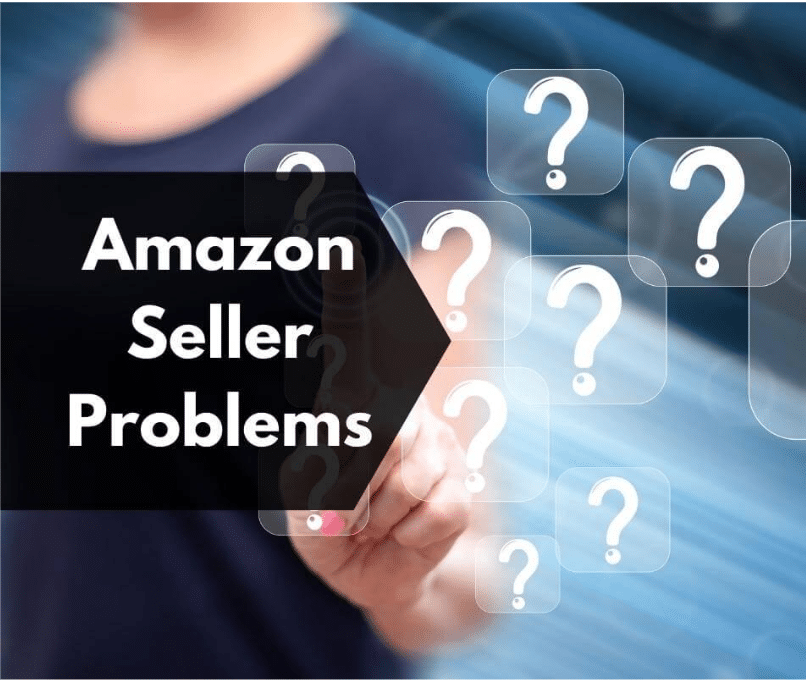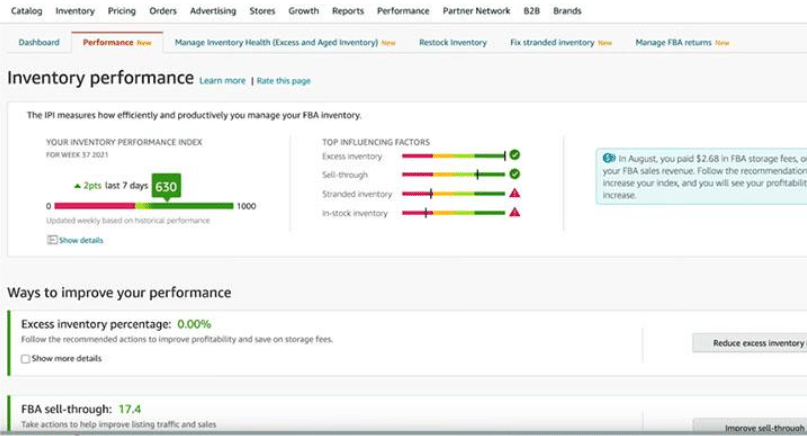Troubleshooting Common Amazon Seller Issues

Amazon is an e-commerce giant that has revolutionized how to buy and sell products. More than 2.5 million active sellers and over 350 million products provide a huge marketplace for all sellers to reach customers of a larger magnitude – and that too, GLOBALLY!
This is a perfect chance for businesses of any scope, from the independent entrepreneur to the big corporation, to increase their clients and thus boost sales.
But it comes with its fair share of challenges to sell on Amazon as well. A new seller has a lot of challenges waiting in the shadows on Amazon Seller Central, and the new experience in itself can be very overwhelmingly haunting!
This blog post seeks to steer you across some of these common Amazon Seller Central issues faced by Amazon sellers. We will look into each issue in detail and propose hands-on solutions to let you swim around the Amazon marketplace successfully.
Common Amazon Seller Central Issues Faced by Amazon Sellers
Shortage of Cash: The starting of any Amazon business definitely involves proper initial capital toward inventory, marketing, and other costs. Often sellers have to face the shortage of cash flow, particularly when they reinvest the profit into buying more inventory, which ultimately tightens the budget.
Saturated Niches: Choosing the right product makes or breaks everything. It is difficult for most sellers to find a balance between the popularity of a product that they already know about and products that cater to a saturated market, making it hard for them to stand out and make sales.
Inventory Performance Index (IPI) issues: The IPI score is the measure Amazon applies to check the performance of sellers in managing their inventory on Amazon Seller Central. A low score can limit your ability to sell and lead to more storage fees.
Price Wars: Competing only on price can lead to a price war where only one party has the competitive ability to outlast and negotiate for better terms. Sellers are often not able to hit upon the right pricing strategy.
Other Factors:
Late Profitability: Because there have to be investments that are done initially and other operating expenses that are accrued, a period is needed before the profitability starts reflecting in Amazon. This disheartens many people who might be new sellers and have higher expectations for instant results.
Overloaded competition: With millions of sellers on Amazon, there’s no way to easily let anyone stand out. Offerings and innovations need to be way ahead of the curve each and every time.
Amazon Feedback: Customer feedback is an essential part of getting one’s products and services right. However, many sellers struggle to get enough reviews or face negative feedback.
Policy and Regulations Enforced: Amazon strictly lays out certain regulations and policies that the sellers are to comply with on Amazon Seller Central. Violating or non-conformance with the same can mean penalties such as suspension of your seller account on the marketplace, and that would mean disruption in your business on a huge level.
Incomplete Product Descriptions: This is the hardest part, and a lot of sellers have Amazon Seller Central issues with providing persuasive and complete descriptions of the benefits their products listing provide.
Poor Quality Images: The quality of your images is one other thing that needs due consideration, as these represent your products. A poor-quality image can drive away customers and therefore lessen the number of sales.
Uncompetitive Pricing: For the products on Amazon to be successful, one needs to keep competitive pricing for the products on Amazon. Most sellers lose this battle of setting the right pricing to draw customers, yet still at a fair margin for themselves.
Poor Keyword Optimization: Keywords are the driver of visibility on Amazon search engines. However, very few sellers effectively optimize their product listings related to keywords that equal lesser traffic and sales.
Blocked and Inactive Listings: Listings can sometimes be blocked or inactive for a host of reasons, ranging from policy violations to issues with listing details caused by Amazon for some reason. This results in lost sales and much frustration for the seller on Amazon Seller Central.
Permissions problems and data: Permissions are needed to sell in many categories on Amazon. And permissions Amazon Seller Central issues are encountered by many sellers or missing data for Amazon.
Suppressed Listings: Your listing might be suppressed by Amazon if it does not comply with their product listing standards. If the due to listing optimization issues, listing is suppressed, naturally, in consequence, your product won’t be visible in the search results at Amazon, so that can decrease a lot of visibility and potential sales.
Detailed Troubleshooting Guide for Each Issue on Amazon Seller Central
Shortage of Cash:
Proper Management of Cash Flow: Keep an eagle’s eye on the financial record, maintaining all the expenses and sales records. In case of need, use financial software tools for better management.
Inventory Management: Efficient inventory management can protect from over-purchasing, which can tie up cash. Analyze your lost sales for effective restocking.
Dispute Shortage Deductions: Multiple dispute claims, when faced with the shortage deductions, should be resubmitted together in a batch so that they get escalated within Amazon.
Saturation Niches:
Market Research: Explore saturated markets for profitable niches, which are yet to get saturated with proper market research.
Unique Selling Proposition (USP): A unique selling proposition is a factor that distinguishes a product from that of competitors, such as product features, branding, packaging, and customer service.
Inventory Performance Index (IPI) Problems:
Keep an eye on your IPI Score: Monitor your IPI score in Seller Central and pay attention to its suggestions on how to improve it regularly.
Inventory Forecasting: Have strong inventory forecasting such that there is enough stock in place on Amazon Seller Central to meet demand, but not to overstock.
FBA Inventory Management: Use FBA inventory management for any product used under FBA to avoid problems related to storage fees.

Price Wars:
Value-Based Pricing: Rather than entangling oneself in a price war, value-based pricing can be adopted. Emphasize the unique benefits and value the customer will derive from your product in order to justify your pricing.
Strong Branding: Strong branding can demand premium pricing. Quality images of the product, strong and convincing descriptions, and high customer service investment will help to build brand loyalty.
Deferred Profitability:
Long-Term Strategy: View your Amazon business as an investment in the long run. The first phase might not be able to break even on the set-up costs. It takes time to achieve profitability.
Budget Planning: Formulate a balanced budget plan that considers all costs that may be incurred, whether it is inventory, marketing, shipping, or Amazon fees.
Operational Efficiency: Strive to smoothen the operations for cost reduction. Maybe this would mean sourcing products via the best-supplied chain, automating processes, or enhancing customer service.
Competition Overload:
Product Differentiation: Make sure that your product is different from that of competitors either on the basis of unique features, high quality, or superior customer service.
Brand: A strong brand helps you stand out in a busy marketplace. Professional product photography, powerful listings, and positive customer interactions are three effective ways to build up your brand.
Customer Engagement: Engage your customers via email marketing, social media, and personalized customer service. This will assist in both securing repeat customers and differentiation.
Receiving Feedback from Amazon:
Ask for Reviews: Ask for reviews on Amazon within the email content for your follow-ups with happy consumers.
Responding to Negative Feedback: Address negative feedback quickly and professionally on Amazon Seller Central. Offering solutions can turn a bad experience into a good one and demonstrate to your potential customers that you really do care.
Product Improvement: Make use of the feedback on the areas that need improvement in the product, and try to make them better. It may bring better reviews next time.
Strict Restrictions and Policies:
Understanding Amazon Policies: You should go through all the Amazon policies and guidelines very carefully to avoid any violations.
Regular Check the Health of Your Account: Review the health of your account at your Seller Central regularly checking for policy warnings or notifications.
Plan for what could go wrong: Plan for a backup in case of an Amazon Seller Central account suspension. More products in inventory may be needed, or another location may be considered as an outlet.
Incomplete Product Descriptions:
Know your audience: Understanding what will inspire and resonate with your target customer is what helps you craft compelling descriptions.
Highlight the benefits: Concentrate on the benefits your product brings, not just the features. How will the product solve a problem or make the life of the consumer easier?
Tell a Complete Story: Give all the information on the product on Amazon Seller Central that is relevant, as it makes the customer make a complete decision.
Poor Image Quality:
Invest in Professional Photography: High-quality pictures may contribute to a great extent toward a sale. Where possible, consider hiring a professional product photographer.
Adhere to Amazon’s Requirements: Amazon has certain expectations with product images. Ensure that your images do not break any of these rules to avoid any confrontation.
Use Multiple Images: Show multiple angles and use images to show the size and uses of the product on Amazon Seller Central.
Lack of Competitive Pricing:
Market Research: Look for the pricing of competitors and the general trends in the market. Use this to price your products competitively.
Pricing Strategy: Consider different strategies of pricing such as cost-plus pricing, value-based pricing, or psychological pricing
Use of a Repricing Tool: There are tools available that automatically adjust your prices according to the competition and your pricing strategy.
Insufficient Keyword Optimization:
Keyword Research: Use tools to know high-volume keywords applicable to your product.
Optimized Product Listings: Edit your product to include these selected keywords naturally in the title, description, and backend search terms.
Monitor Performance: Regularly monitor the performance of your keywords and make necessary changes on Amazon Seller Central.
Inactive and Blocked Listings:
Know why: Check your Seller Central account for notifications or warnings by Amazon regarding the block of the product listing.
Work on the problem: Amend your product listing or provide additional information to Amazon where necessary.
Request for Reinstatement: Once the problem is resolved, request reinstatement of the listing through Amazon’s Seller Support.
Incorrect Formatting and Invalid Data:
Follow Amazon format: Please ensure to give us information based on the formatting required by Amazon to the letter.
Listing Optimization Issues tool: Get yourself an Amazon listing tool, a tool that could help you by formatting data correctly and pointing out the errors before uploading the data.
Review Often: Review your listings often to catch mistakes and correct them.
No Permissions or Data Available:
Category Approval: Most of the categories listed require approval from Amazon before you can list your products.
Provide Necessary Data: Enjoin all the necessary data with the product whenever applying for a category approval.
Stay in Compliance: Always make sure that you adhere to Amazon’s rules and guidelines so as to maintain your selling privileges.
Suppressed Listings:
Understand Suppression Reasons: It’s likely the missing information, invalid details, or even any policy violation.
Fix the Issue: Address what is causing your listing to be suppressed, get the required information on your listing, or correct errors.
Monitor Your Listings: Monitor your listings by frequently checking your Seller Central account health and inventory Amazon Seller Central dashboard to identify suppressed listings.
Conclusion:
Understanding these common Amazon seller issues is what ensures that you effectively troubleshoot them, keeping the business afloat. Yes, such Amazon Seller Central issues may be seen as too much to handle, but then, they form part and parcel of the Amazon selling expedition.
When you arm yourself with doable strategies and knowledge, you are in a position to maneuver through the challenges with great ease, thus having your business doing well continually.
If you need professional help with your Amazon account, please feel free to contact SAECOM FBA Pro. Our experts are here to help bring order to the jungle of Amazon sellers. Whether it’s optimizing your product listings or fixing account issues, we’ve got you covered in Account management concerns USA & Canada to help make your Amazon adventure one to remember.
Every challenge is an opportunity for growth, so keep learning, keep growing, and keep selling!


